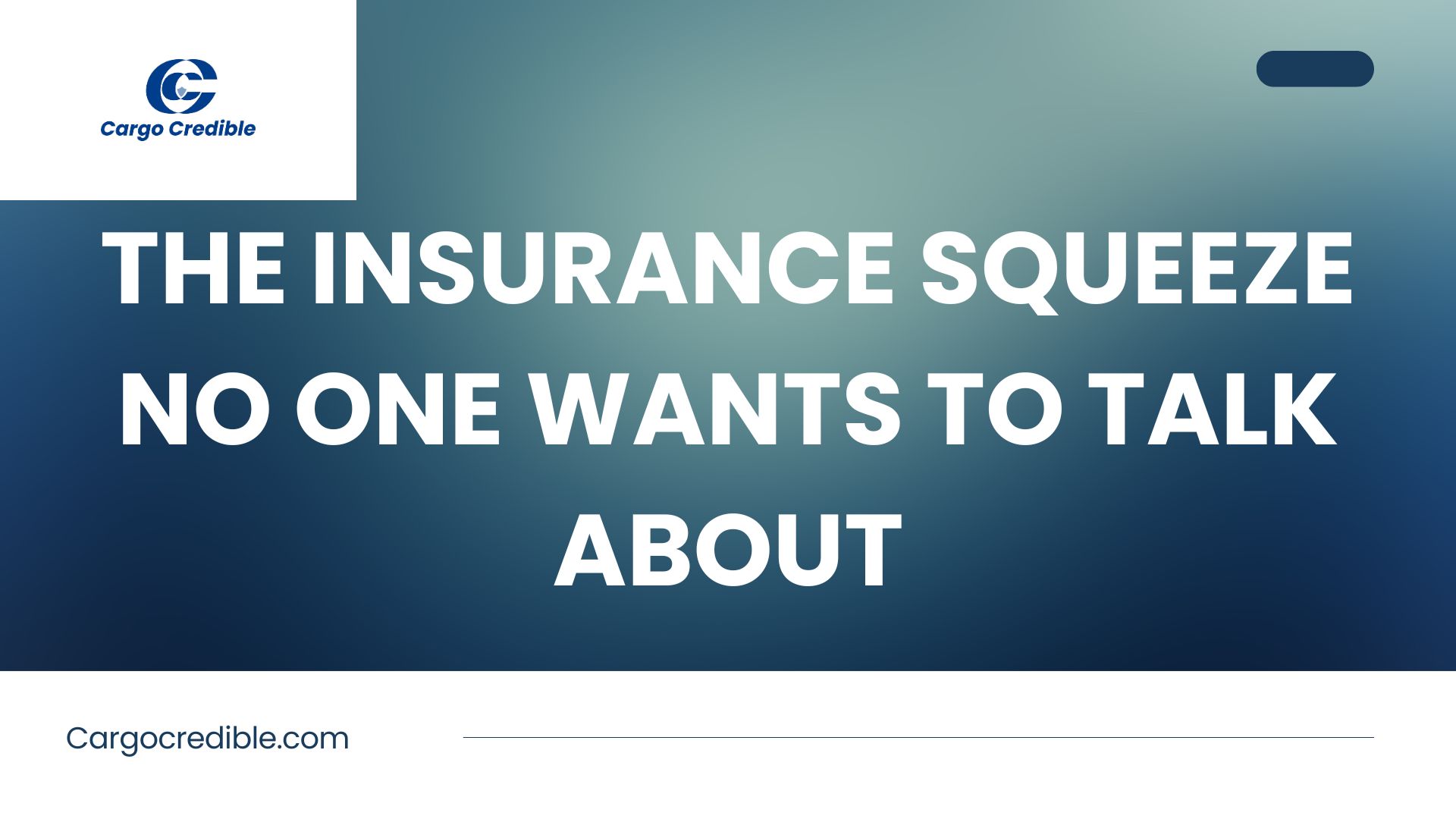The Insurance Squeeze No One Wants to Talk About

Welcome back to our deep dive into the less-visible forces threatening the trucking industry. This week, we’re pulling back the curtain on the quiet, behind-the-scenes pressures that can make or break a fleet. And we’re starting with a whopper: the one bill everyone dreads, the one conversation that happens in hushed tones—the insurance squeeze.
If you think fuel prices are scary, wait until you see what’s happening with insurance. It’s the silent profit killer, pushing small and mid-sized fleets to the brink.
What’s Actually Going On?
You’ve got a small trucking company—maybe five trucks, maybe ten. You know every driver by name. You’ve worked years to build trust, reputation, and reliability. Then, one day, your insurance renewal hits your inbox. You open it—and your heart drops. Your premium just doubled. Again. No accidents. No new trucks. No new drivers. Just boom—another gut punch from the insurance world.
Welcome to what many in the industry are calling “The Insurance Squeeze.” It’s real, painful, and threatening to squeeze small fleets out of business. Insurance in trucking is basically a promise: “If something goes wrong, we’ll help cover the costs.” But in trucking, “something going wrong” can cost millions—especially after big lawsuits called nuclear verdicts. A nuclear verdict means a jury awards over $10 million in damages after a crash. Even when a trucking company isn’t 100% at fault, juries often sympathize with the car driver and hit the trucking company hard. The result? Insurance companies get scared. They have to pay huge settlements. So, to protect themselves, they raise rates. And small fleets are the ones paying the price.
The Hidden Financial Chain Reaction
Here’s what happens behind the scenes when those nuclear verdicts and rising claims pile up:
- Insurance payouts spike → Insurance companies lose money.
- Reinsurers (companies that insure insurance companies) raise their prices.
- Primary insurers pass those costs down to fleets.
- Small fleets, with fewer trucks and less negotiating power, get slammed hardest.
It’s like a domino effect — and every tile topples onto the little guy.
The Real Numbers (And Why They Hurt)
Average truck insurance premiums for small fleets have jumped 30–50% over the past few years. A fleet that used to pay $8,000 per truck might now pay $12,000–$15,000 per year. For many owner-operators and micro-fleets, that’s the difference between staying open or shutting down. Some small companies are now paying more for insurance than for fuel or maintenance. Let that sink in.
Why Small Fleets Feel It More Than the Big Guys
Large carriers—the mega fleets with hundreds or thousands of trucks—have advantages small fleets lack:
- In-house legal teams
- Dedicated safety departments
- Leverage to negotiate bulk insurance deals
- Self-insurance programs
Meanwhile, a family-run outfit with eight trucks is buying insurance the same way you buy car insurance—one policy at a time, at whatever rates they’re offered. So, when rates jump, big fleets absorb it. Small fleets drown in it.
The Hidden Pressures Nobody Talks About
It’s not just “higher prices.” Structural and legal changes make things worse:
- Minimum Liability Requirements Rising: Lawmakers are debating raising federal minimum liability insurance for trucks (currently $750,000). If that goes up to, say, $2 million, premiums will skyrocket.
- Litigation Funding: Private investors are bankrolling lawsuits against trucking companies, because big verdicts bring big payoffs. That means more lawsuits and more nuclear verdicts.
- Regulatory Burdens: Compliance costs—ELDs, safety tech, drug and alcohol testing—already eat margins. Add skyrocketing insurance, and small fleets can barely breathe.
The Dangerous Downstream Effects
When insurance costs spiral, it doesn’t just hurt truckers. It hurts everyone.
- Fewer small fleets → less competition → higher shipping costs
- Higher shipping costs → more expensive groceries, clothes, fuel
- More pressure on drivers → burnout, safety risks, and high turnover
So, when people talk about “supply chain issues,” the hidden truth is that insurance might be one of the quiet culprits strangling the system.
So, What Can Small Fleets Actually Do?
While you can’t control the entire system, you can soften the blow:
Build a Bulletproof Safety Culture
Insurance companies reward safety. Use dash cams, telematics, and training to prove your drivers are low-risk.
Keep Impeccable Records
Every clean inspection, safety report, and training log is gold when negotiating rates.
Shop Around—Smartly
Don’t just auto-renew. Compare brokers and seek insurers specializing in small fleets or new ventures.
Consider Captives or Group Programs
If you have 10–20 trucks, explore group captives—insurance pools where fleets share risk.
Stay Educated
Understand what drives rates: claim history, CSA scores, driver turnover, safety tech—all matter.
The Human Side
Behind every insurance premium is a family-run business fighting to survive. The father who built his fleet from one truck. The dispatcher juggling deliveries and driver safety. The driver is sleeping in a cab miles from home. The insurance squeeze isn’t just about numbers—it’s about survival.
Unless the industry, insurers, and policymakers find balance, we risk losing the very backbone of our freight system: the small fleet. They’re not asking for handouts—just a fair shot to compete, stay protected, and keep the wheels turning. Because when small fleets disappear, everyone pays the price.
Comments (0)
- No comments yet.